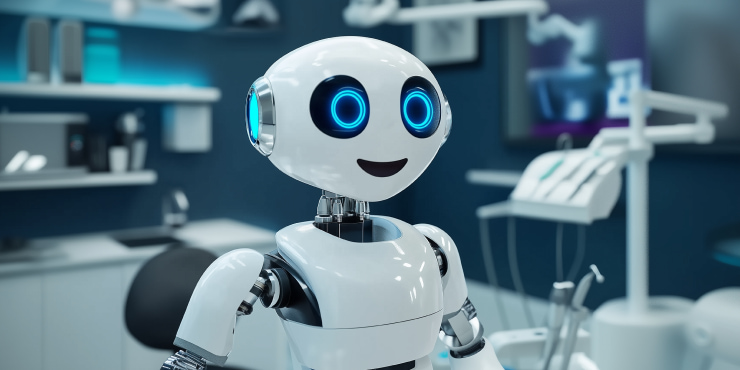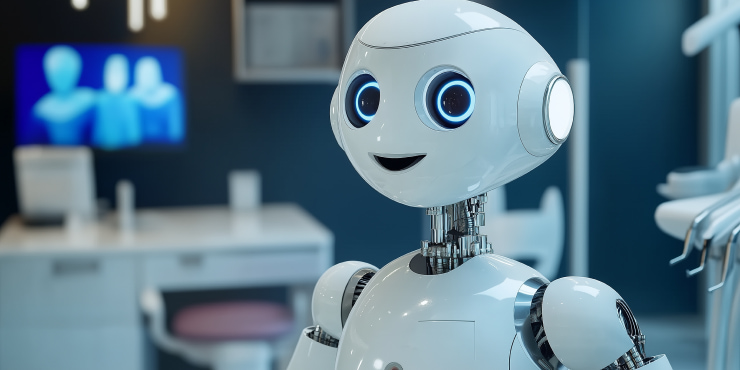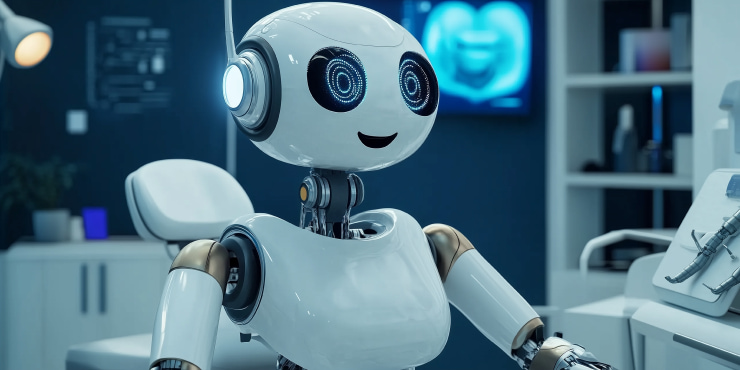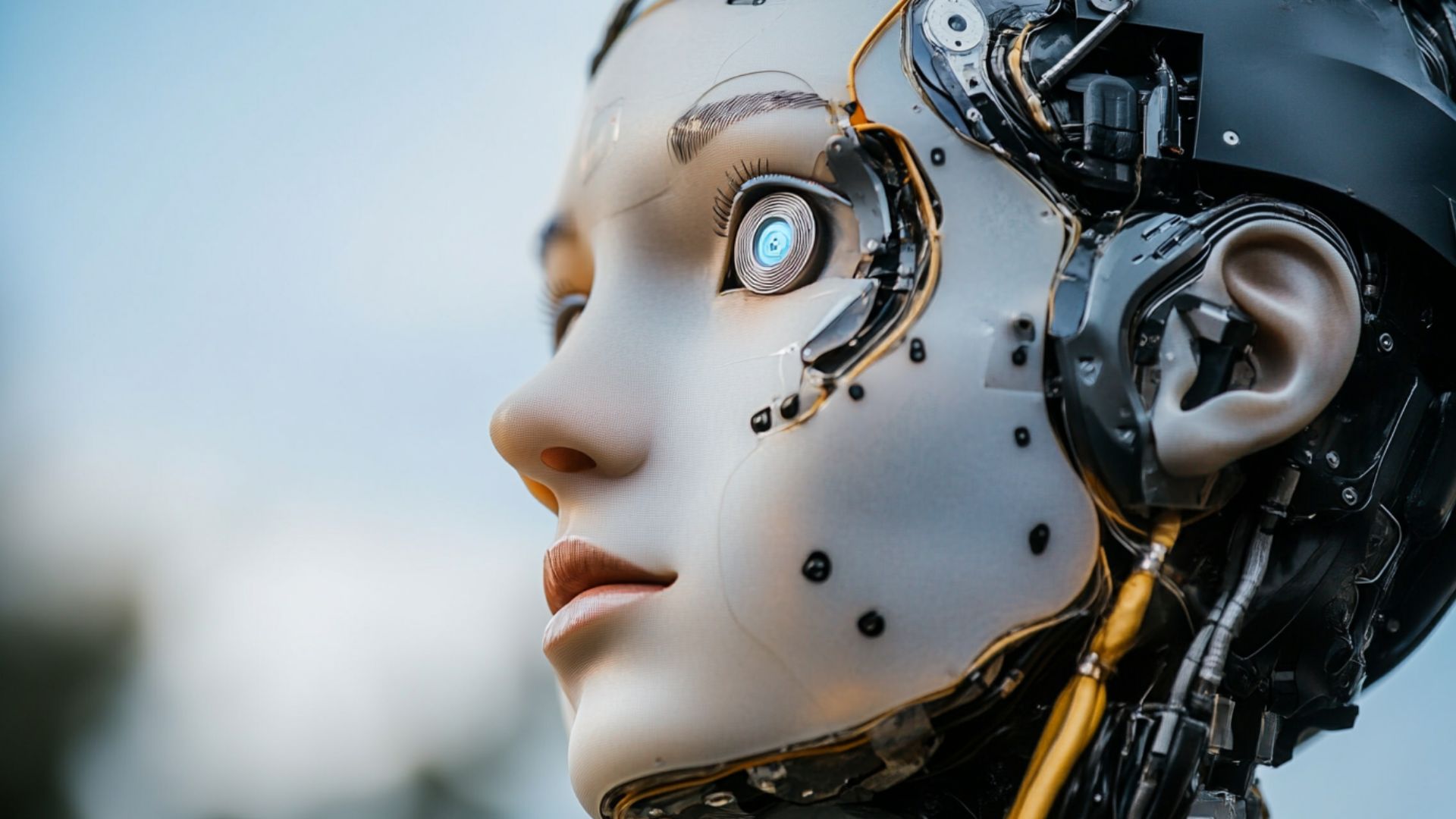Introduction to the Dental Virtual Receptionist

Running a dental office is more than just fixing teeth. It's also about managing appointments, answering calls, and keeping patients happy. That's where a dental virtual receptionist comes in. Think of it as a friendly, helpful assistant. But instead of sitting at the front desk, they work remotely, often using phone systems and specialized software.
Technology is changing how dental offices work. Things like online booking and automated reminders are becoming common. A virtual dental assistant is another step in this direction. They handle many of the tasks that keep an office running smoothly.
Good customer service is key in any business, and dental offices are no different. Patients want to feel valued and heard. Efficient administration, like quick scheduling and clear communication, is also vital. A virtual receptionist can help provide both. This enhances the patient experience and frees up the in-office team to focus on patient care.
What is a Dental Virtual Receptionist?
A dental virtual receptionist is like a receptionist who works remotely but handles many of the same tasks as someone working in the office. They use technology like phone systems, computers, and special software. Think of them as a helpful assistant available 24/7, even after hours.
They can do many different jobs, just like a regular receptionist. One of the most common things they do is schedule appointments. Patients can call in or even use online systems, and the virtual receptionist can book, change, or cancel appointments. They also send reminders about upcoming appointments, which helps reduce no-shows.
Virtual receptionists also handle patient questions. They can provide information about office hours, directions, insurance, and common dental procedures. They can even help patients fill out forms or direct them to the right resources. Essentially, they are the first point of contact for many patients.
Sometimes, artificial intelligence (AI) automates some of these tasks. For example, an AI-powered system might be able to answer simple questions or even schedule appointments based on pre-set rules. This can make the virtual receptionist even more efficient. However, often a real person is handling the interactions, especially for more complex issues. The combination of technology and human interaction is what makes a virtual receptionist so effective.
Benefits of a Dental Virtual Receptionist for Dental Practices
Using a dental virtual receptionist has many benefits for dental offices. One big advantage is cost savings. Offices might not need to hire a full-time, in-house receptionist, which can save money on salary, benefits, and office space.
Virtual receptionists can also reduce human error. Since they often use software, they are less likely to make mistakes when scheduling appointments or entering info. This can lead to fewer problems and a smoother running office.
Another great benefit is 24/7 availability. Many answering services for dental offices offer after-hours support. So patients can call anytime, even outside office hours. This is a big plus for patients and can help attract new patients.
Virtual receptionists can also improve patient satisfaction. By providing quick and efficient service, they make it easier for patients to get the information they need. This can lead to happier patients who are more likely to return. Ultimately, this improves the overall efficiency of the office. This is achieved by streamlining tasks and freeing up staff to focus on patient care.
Overcoming Challenges with a Dental Virtual Receptionist
While virtual receptionists offer many advantages, there are also some challenges to consider. One potential concern is integration with existing systems. The virtual receptionist service needs to be able to work with the office's current software and phone systems. This might require some technical adjustments.
Another challenge is building patient trust. Some patients might be hesitant to talk to someone they can't see. It's important for the virtual receptionist to be friendly, professional, and reassuring to build trust.
Technology adoption can also be a challenge. Dental staff might need some training to learn how to work with the answering service for dentists service. Patients might also need some time to get used to the new system, especially if they are used to talking to someone in the office.
However, these challenges can be overcome with proper planning and communication. By providing adequate training for staff and patients and by choosing a virtual receptionist service that integrates well with existing systems, dental offices can successfully implement this technology and reap its many benefits.
How Dental Virtual Receptionists Transform Patient Experience

Dental virtual receptionists are changing how patients interact with dental offices. This makes the whole experience much smoother and more convenient. One of the biggest ways they do this is by offering seamless communication. Patients can easily reach the office, even outside of normal business hours, through phone calls, emails, or even online chat. This makes it easier for them to schedule appointments, ask questions, or get help with any concerns. No more waiting on hold or struggling to get through during busy times.
Personalization is also key to a good patient experience, and technology makes this possible. Virtual dental offices can be programmed to recognize returning patients and greet them by name. They can also access patient records to answer questions about past treatments or new appointments. This personal touch makes patients feel valued and heard, which can go a long way in building a strong relationship with the dental office.
Appointment management is another area where virtual dentist secretaries shine. They can send automated appointment reminders via text or email, which helps reduce no-shows. They can also help patients reschedule appointments easily if needed. This saves patients time and hassle, and it also helps the dental office run more efficiently. Follow-ups after appointments are also important. And virtual receptionists can be programmed to check in with patients to see how they are doing and answer any questions they might have. This shows patients that the office cares about their well-being and helps improve satisfaction.
The Impact of AI on Appointment Scheduling
AI is playing a big role in making appointment scheduling even better. AI systems can analyze appointment patterns and find the best times for scheduling. It maximizes the office's time and resources. This can lead to more efficient scheduling and fewer gaps in the schedule.
AI can also help reduce cancellations. AI 24/7 live dentist response free automated reminders and allows patients to reschedule if needed. So, AI can help cut the number of missed appointments. This is good for both the patient and the dental office.
Automated reminders are a powerful tool for improving patient adherence. Patients are busy, and they sometimes forget about appointments. Automated reminders help patients remember their appointments and reduce the likelihood of no-shows. AI can even personalize these reminders, sending them at the most convenient times for each individual patient. Rescheduling capabilities are also important. Life happens, and sometimes patients need to change their appointments. AI and dentistry systems make it easy for patients to reschedule online or through the virtual receptionist, without having to call the office.
Enhancing Communication with Patients Using a Virtual Receptionist
Virtual receptionists are great at handling multiple channels of communication. Whether a patient prefers to call, email, or chat online, the virtual receptionist can handle it all. This keeps patients engaged and makes it easy for them to connect with the office in whatever way is most convenient for them.
One of the biggest advantages of a virtual receptionist is the ability to manage high volumes of patient inquiries. During busy times, it can be difficult for a traditional receptionist to answer all the calls and emails. An artificial intelligence dental receptionist can handle a large number of inquiries simultaneously. This ensures that no patient is left waiting. This also means patients get timely responses to their questions and concerns. This is critical for good customer service. Whether it's a quick question about office hours or a more complex inquiry about insurance, it doesn't matter. The virtual receptionist can provide the information patients need quickly and efficiently. This improved communication leads to happier patients and a more smoothly running dental office.
Cost-Efficiency and Scalability of Dental Virtual Receptionists
Another thing that makes virtual dental receptionists a great option is cost-efficiency. Think about it: hiring a full-time, in-house receptionist comes with a lot of expenses. There's salary, of course, but also benefits like health insurance, paid time off, and retirement contributions. Plus, you need to provide office space, equipment, and ongoing training. These costs can add up quickly, especially for smaller dental practices.
A dental virtual receptionist service, on the other hand, often costs less than hiring a full-time employee. You typically pay a monthly fee for the service, which covers everything. This can be a significant cost saving, especially if you don't need someone in the office all the time. You're essentially getting the same services – appointment scheduling, patient communication, and more. But it's all at a lower price.
Beyond the immediate cost savings, virtual receptionists also offer scalability. As your dental practice grows, you'll likely need to handle more calls, schedule more appointments, and manage more patients. With a traditional receptionist, this might mean hiring additional staff, which again increases your costs.
But with a virtual dental assistant, scaling is much easier. Most services can handle increased call volumes and patient inquiries without more personnel. They have the capacity to adapt to your growing needs, so you can focus on expanding your practice without worrying about staffing issues. This means you can grow your business more easily and efficiently without the added expense and hassle of hiring and training new employees. Essentially, the remote dental receptionist service grows with you. This scalability makes virtual receptionists a smart choice for dental practices of all sizes, from small startups to large, established offices. This allows them to manage their resources wisely and invest in other areas of their practice. Those include new equipment or marketing. It can further contribute to growth and success.
Future Trends in Dental Virtual Receptionist Technology

The world of dental virtual dental offices is constantly evolving, with new technologies popping up all the time. One exciting trend is the increasing use of machine learning. Machine learning allows computers to learn from data and improve their performance over time. For virtual receptionists, this means they can become better at understanding patient needs. They can answer questions accurately and even predict scheduling patterns. Imagine a virtual receptionist that learns your office's busiest times and adjusts the schedule.
Voice recognition is another area that's getting more advanced. Soon, patients might be able to interact with virtual receptionists using natural language, just like talking to a real person. This would make communication even easier and more convenient. Think about being able to say, "Hey virtual receptionist, I need to reschedule my appointment for next Tuesday." And the system automatically makes the change.
Chatbots are also becoming more sophisticated. These are computer programs that can hold conversations with people, often through text or online chat. In the future, remote dental receptionist could handle many routine tasks for dental offices, like:
- Answering frequently asked questions
- Confirming appointments
- Even collecting patient feedback
This would free up human virtual receptionists to focus on more complex tasks.
Looking ahead, AI and automation are going to play an even bigger role in dental administration. We might see AI-powered systems that can automatically verify insurance information. These systems can process payments and even generate reports. These advancements will streamline operations and make things easier for staff and patients. Imagine a system that automatically checks a patient's insurance coverage before their appointment, so there are no surprises at checkout.
Another exciting possibility is the integration of virtual dental office receptionists with other technologies, for example, telehealth platforms. This could allow patients to have virtual consultations with dentists and schedule follow-up appointments directly through the virtual receptionist. The possibilities are endless. And it's exciting to think about how these future developments will continue to enhance dental office operations. The goal is to make things as smooth and efficient as possible. So dental professionals can focus on providing the best possible care for their patients.
Implementing a Dental Virtual Receptionist in Your Practice
Thinking about adding an orthodontic answering service to your practice? Here's a simple, step-by-step guide to help you through the process:
- Assess Your Needs. First, figure out what you want the virtual receptionist to do. Do you need help with appointment scheduling, answering phones, managing patient inquiries, or all of the above? Understanding your needs will help you choose the right service.
- Research and Choose a Platform. There are many different virtual receptionist services available. Do some research online, read reviews, and compare features and pricing. Look for a platform that specializes in dental practices and offers the specific services you need. Consider things like how easy it is to use, what technology they use, and what kind of support they offer.
- Check Compatibility. Make sure the virtual receptionist platform can work with your existing dental software and phone system. Integration is key to a smooth transition. Ask the service provider about their integration process and what technical support they offer.
- Plan the Implementation. Once you've chosen an answering service for the dentists platform, work with the service provider to create an implementation plan. This will involve setting up the system, configuring the software, and training your staff. Decide on a timeline for the rollout and make sure everyone is on board.
- Train Your Staff. Your team needs to know how to work with the virtual receptionist. The service provider should offer training on how to use the system, access patient info, and handle different situations. Make sure your staff feels comfortable and confident using the new technology.
- Inform Your Patients. Let your patients know about the new virtual receptionist service. Explain how it will benefit them, such as easier scheduling and 24/7 availability. You can send out emails, post notices in the office, and update your website.
- Go Live and Monitor. Once everything is set up and your staff is trained, it's time to launch the AI and dentistry receptionist service. Monitor the system closely to make sure everything is running smoothly. Track key metrics like call volume, appointment scheduling, and patient satisfaction.
- Provide Feedback. Regularly communicate with the virtual receptionist service provider. Provide feedback on what's working well and what could be continuously improved. This will help them refine their services and make the system even better for your practice. Implementing a virtual receptionist is a big step, but by following these steps, you can make the transition smooth and successful.
In conclusion, a virtual receptionist offers a modern solution for enhancing patient experience. It automates tasks, improves communication, and offers 24/7 availability. The virtual receptionists free up staff to focus on patient care. Challenges like integration and patient trust exist. However, careful planning and communication can ensure successful implementation. Now, technology evolves. So, AI and machine learning will further enhance artificial intelligence dental receptionists' capabilities. It will lead to even greater efficiency and patient satisfaction in the future.


